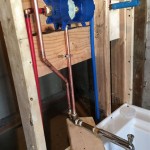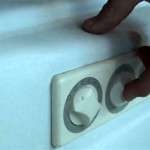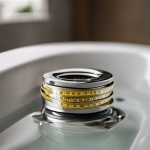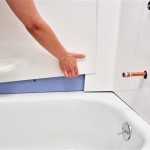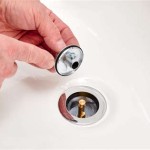```html
Bathtubs For Narrow Spaces: Maximizing Relaxation In Limited Bathrooms
The challenge of designing a small bathroom often revolves around maximizing functionality without sacrificing comfort and aesthetics. A primary concern is frequently the bathtub. Many homeowners desire a bathtub for relaxation and bathing convenience, but traditional bathtubs can consume a significant amount of space, particularly in narrow bathrooms. Fortunately, several bathtub designs are specifically tailored for narrow spaces, offering a solution that balances practicality and enjoyment.
Selecting the right bathtub for a narrow bathroom requires careful consideration of dimensions, shape, and installation options. Ignoring these factors can result in a cramped and uncomfortable bathroom experience. The following sections will explore various bathtub types suitable for narrow spaces, addressing their characteristics, installation requirements, and potential benefits.
Understanding Space Limitations and Measurement
Before exploring specific bathtub models, accurately assessing the bathroom's spatial constraints is crucial. This involves meticulously measuring the available length and width of the intended bathtub area. Note any obstructions, such as plumbing fixtures, doors, or windows, that might impede bathtub placement. Consider the door swing; ensuring adequate clearance to enter and exit the bathroom without obstruction is paramount.
Accurate measurements will dictate the maximum dimensions of the bathtub that can be accommodated. It is advisable to leave some buffer space around the bathtub for ease of movement and cleaning. Consider the overall layout of the bathroom. Evaluate how the bathtub will interact with other fixtures, such as the toilet, sink, and shower. A poorly planned layout can result in a cramped and awkward bathroom design.
Consider also the placement of plumbing. Relocating plumbing can be costly and complex. Ideally, the new bathtub should align with existing plumbing connections to minimize installation expenses. If plumbing relocation is unavoidable, factor this into the overall project budget and timeline. Furthermore, assess the floor's structural capacity. Bathtubs, especially when filled with water, can be quite heavy. Ensuring the floor can support the weight of the bathtub and its contents is essential for safety and longevity.
Types of Bathtubs for Narrow Bathrooms
Several bathtub designs are specifically engineered to fit into narrow spaces without compromising bathing comfort. Some prevalent options include:
*Alcove Bathtubs: Alcove bathtubs are designed to fit snugly into a three-walled recess, typically with one finished side. This design is highly efficient for maximizing space in narrow bathrooms. Alcove bathtubs are available in various lengths, with shorter models specifically intended for smaller bathrooms. They are a common and relatively affordable option.
*Corner Bathtubs: Corner bathtubs are designed to fit into the corner of a bathroom, utilizing otherwise underutilized space. They are often triangular or quarter-circle in shape and can be a good choice if the available length is limited but there is sufficient corner space. Corner bathtubs can create a visually interesting focal point in the bathroom.
*Japanese Soaking Tubs (Ofuro): Japanese soaking tubs, or Ofuro, are typically shorter and deeper than traditional Western bathtubs. They are designed for sitting upright and soaking, rather than reclining. This design makes them ideal for narrow bathrooms where length is a constraint. They are often made of wood, such as cedar or hinoki, which adds a natural aesthetic to the bathroom.
*Slipper Bathtubs: Slipper bathtubs feature a raised back, providing ergonomic support for the bather's head and shoulders. While traditionally freestanding, smaller versions of slipper bathtubs can be installed against a wall to save space. The raised back can add a touch of elegance to the bathroom design.
*Walk-In Bathtubs: While primarily designed for accessibility, walk-in bathtubs can also be suitable for narrow bathrooms. They feature a watertight door that allows easy entry and exit, eliminating the need to step over a high tub wall. They often have integrated seating and safety features, such as grab bars.
*Freestanding Bathtubs (Smaller Models): While freestanding bathtubs generally require more space, smaller, streamlined models are available that can work in narrow bathrooms. These models often have a minimalist design and can create a modern and luxurious look. Careful planning is required to ensure adequate space for access and cleaning.
Each of these bathtub types offers unique advantages and disadvantages in the context of a narrow bathroom. Careful consideration of the bathroom's layout, dimensions, and the bather's preferences is essential for selecting the most appropriate option.
Material Considerations and Installation
The choice of bathtub material is another critical factor. Common bathtub materials include acrylic, cast iron, steel, and fiberglass. Each material has its own characteristics in terms of durability, heat retention, weight, and cost.
*Acrylic: Acrylic bathtubs are lightweight, durable, and relatively inexpensive. They are also non-porous, making them easy to clean and resistant to staining. Acrylic bathtubs retain heat well and are available in a wide range of shapes and sizes.
*Cast Iron: Cast iron bathtubs are extremely durable and have excellent heat retention properties. However, they are also very heavy, which can make installation more challenging and may require reinforcing the floor. Cast iron bathtubs are typically more expensive than acrylic or fiberglass models.
*Steel: Steel bathtubs are lighter than cast iron but heavier than acrylic. They are durable and relatively inexpensive. However, steel bathtubs do not retain heat as well as cast iron or acrylic and can be noisy.
*Fiberglass: Fiberglass bathtubs are the least expensive option and are very lightweight. However, they are also the least durable and can be prone to scratching and staining. Fiberglass bathtubs do not retain heat well and can feel flimsy.
The installation process varies depending on the type of bathtub. Alcove bathtubs typically require framing and tiling, while freestanding bathtubs require plumbing connections and a level floor. Walk-in bathtubs often require professional installation to ensure proper sealing and functionality. Regardless of the bathtub type, adhering to the manufacturer's installation instructions is crucial for ensuring proper performance and longevity. Improper installation can lead to leaks, structural damage, and voided warranties.
Consider hiring a qualified plumber or contractor to handle the bathtub installation. This is especially important if plumbing modifications are required or if the floor needs to be reinforced. A professional installation will ensure that the bathtub is properly installed and that all plumbing connections are secure. This can save time, money, and frustration in the long run.
Enhancing the Bathing Experience in a Small Space
Even in a narrow bathroom, steps can be taken to enhance the bathing experience. Consider installing a showerhead and faucet with adjustable settings to customize the water flow and temperature. Adding a handheld showerhead can provide greater flexibility for rinsing and cleaning.
A bathtub caddy or tray can provide a convenient place to store bath products, such as shampoo, soap, and lotions. This can help to keep the bathtub area organized and clutter-free. Installing a grab bar near the bathtub can provide added safety and stability, especially for individuals with mobility issues.
Proper lighting can also enhance the bathing experience. Install dimmable lights to create a relaxing and soothing atmosphere. Adding a small shelf or niche near the bathtub can provide a space to display decorative items, such as candles or plants. Soft, absorbent bath mats can add comfort and prevent slips.
Furthermore, consider incorporating elements of aromatherapy into the bathing routine. Adding essential oils to the bathwater can promote relaxation and stress relief. Scented candles or diffusers can also create a calming and inviting atmosphere. Small details can contribute significantly to the overall bathing experience, even in a limited space.
By carefully planning the layout, selecting the right bathtub model and materials, and paying attention to installation details, it is possible to create a functional and enjoyable bathing space, even in a narrow bathroom. Balancing practicality with aesthetics is the key to maximizing relaxation and comfort in a limited environment.
```
60 Inches Or Less Bathtubs 11 Small For Bathrooms
.jpg?strip=all)
ᐈ Soaking Tubs For Small Bathrooms Deep Bathtubs

Mini Bathtub And Shower Combos For Small Bathrooms

Small Bathtub Ideas And Options Pictures Tips From

7 Stand Alone Bathtubs For Small Bathrooms Luxury Freestanding Tubs

Walk In Bathtub Options For Small Bathrooms American Tubs
Small Bathtub 10 Best S For A Tiny Bathroom Architecture Design

Bathtubs For Small Spaces Freestanding Bathrooms

12 Bathtubs For Small Spaces 2024 Badeloft

Best Types Of Small Bathtubs Modernize
Related Posts

